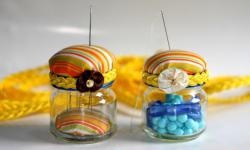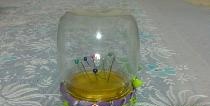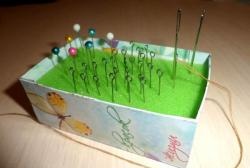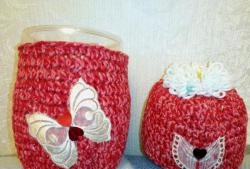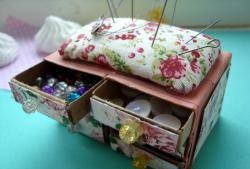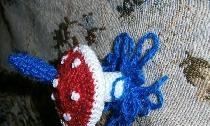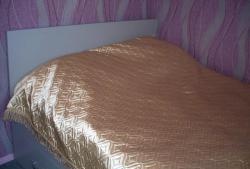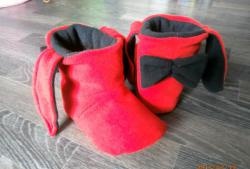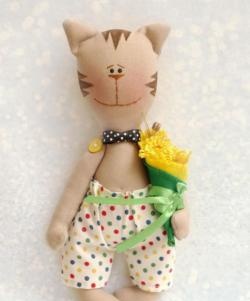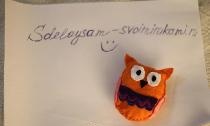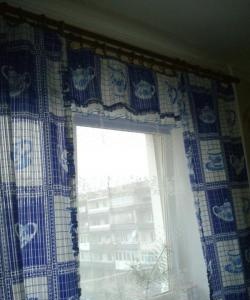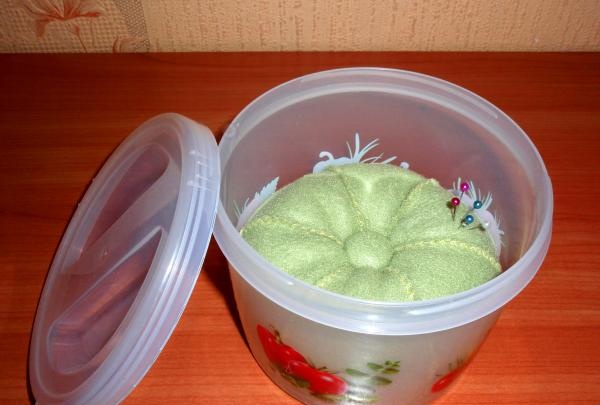
For this we need:
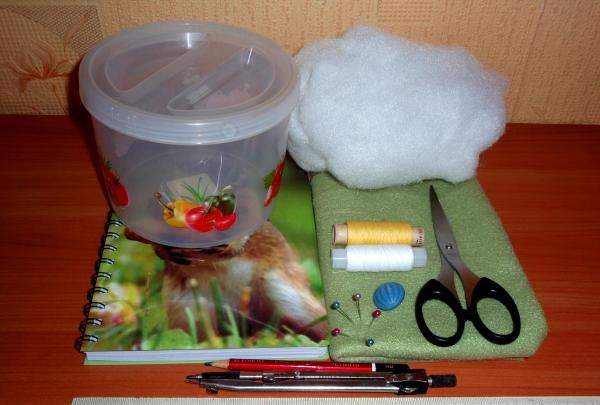
- food container, in this case cylindrical,
- fabric, padding polyester, button on the leg,
- threads, needles, scissors,
- pencil, ruler, compass,
- squared notebook or paper.
Method of work.
1. Take a container and measure the diameter of its lower part.
The diameter of this container is 11.4 cm, respectively, the radius is 2 times smaller and equal to 5.7 cm.
We use the resulting measurement to construct a circle. Using a compass, draw a circle on paper.
Using scissors, cut out the circle that we will need to cut out the bottom of the needle bed.
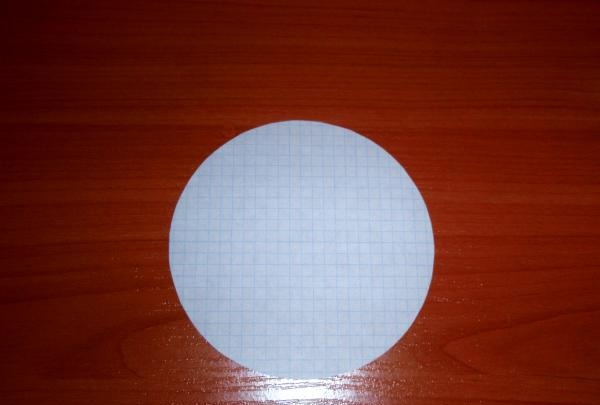
If you don't have a compass, you can trace the bottom of the container with a pencil on paper. When using a pattern, take into account the thickness of the container walls.
2.Place the circle on the fabric, pin it with needles and cut it out, adding an allowance of 3-5 mm.
Since the pincushion imitates a cactus, the color of the fabric is green.
In the future we will use a zigzag seam; the seam allowance directly depends on the height of the seam. If elastic stretch fabric is used, measurements may be approximate. And if the fabric is dense and inextensible, all measurements must be extremely accurate.
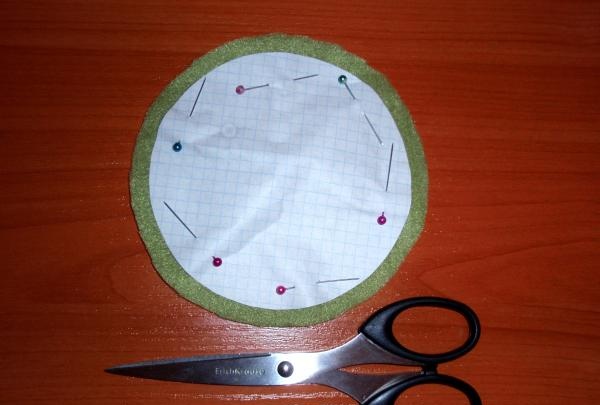

3. Our pincushion will have 6 sectors that will imitate the surface of a cactus. For the pattern, we need to calculate the width of the sector and its height.
The width is calculated using the formula:
pi (3.14) multiplied by the radius and divided by 3.
3.14 x 5.7 cm: 3 = 5.97 cm, rounded to 6 cm.
If you don’t have a calculator at hand, you can add a few millimeters to the radius to get the width of the sector.
The height is taken from personal preference, but taking into account whether you want the bottom of the cactus to fit snugly against the walls of the container.
In this case, the junction height is taken to be 1.5 cm.
The bend length was calculated using the formula: desired height plus radius.
2.5 cm + 5.7 cm = 8.2 cm
Draw a pattern on paper. The result is a triangle, two sides of which are slightly convex.
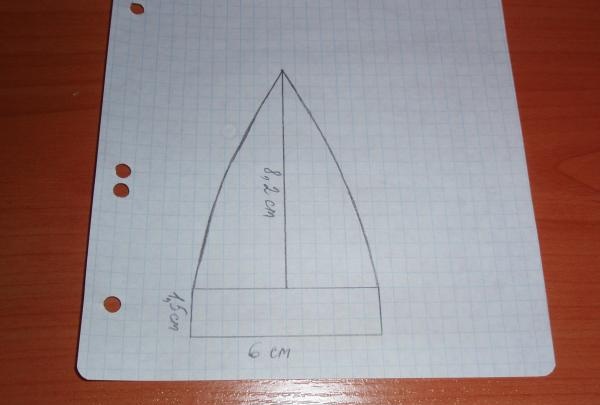
4. Pin the pattern to the fabric with needles and cut it out. Don't forget about the allowances that will go into the seams.
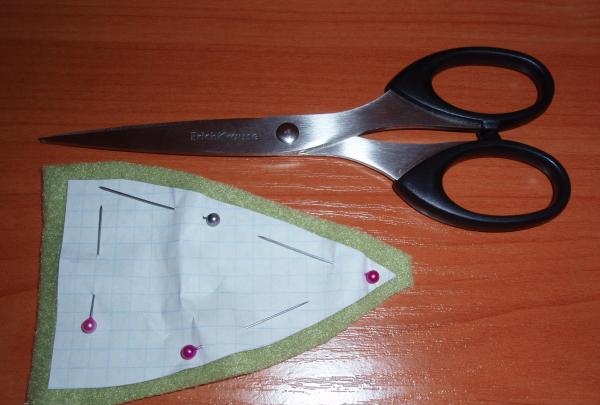
5. We receive the blank for the sector.

We cut out 6 such blanks.

6. We fold the sector blanks inside out and baste them with threads.
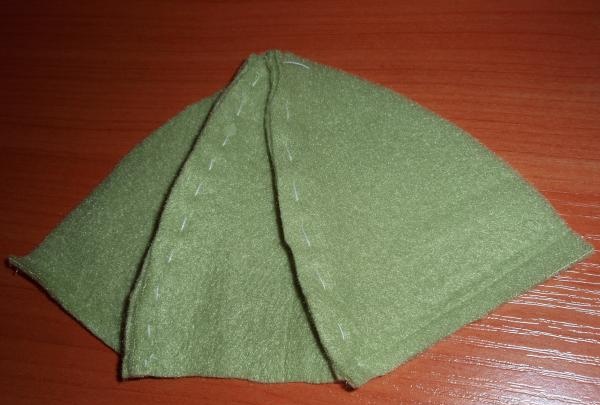
7. Using a sewing machine, we sew the sectors along the face with a zigzag seam, using contrasting yellow threads.
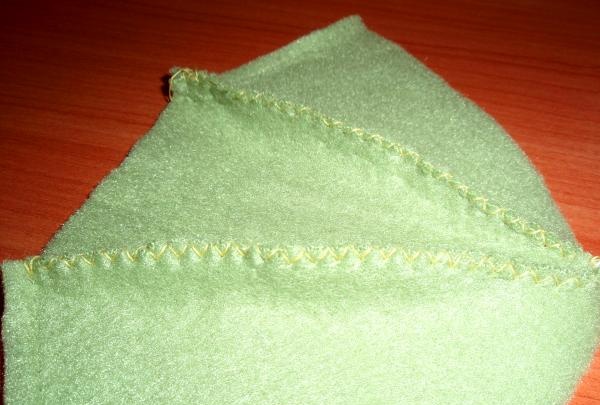
The result was a blank in the form of a cap.
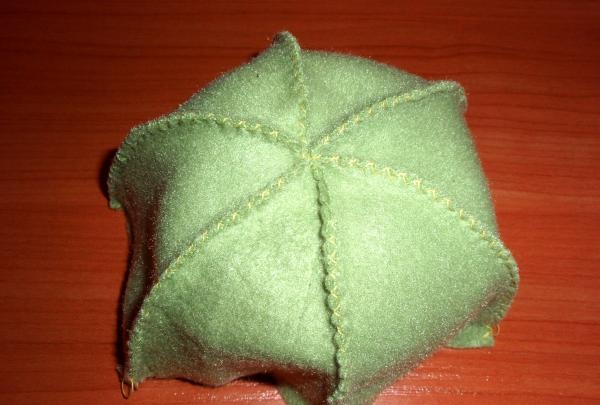
8. Then we sew the bottom to the upper blanks, leaving a small hole for filling with padding polyester.
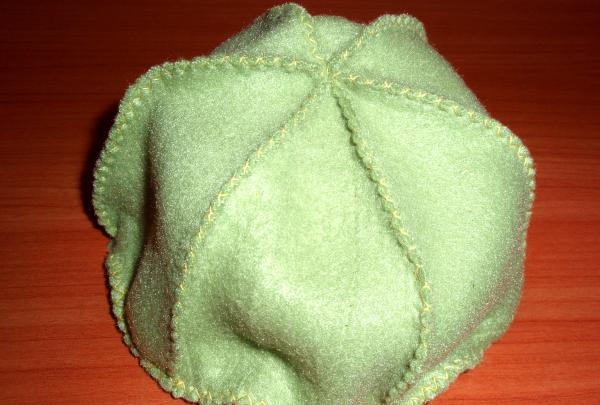
9.Fill the blank with padding polyester and sew up the hole.
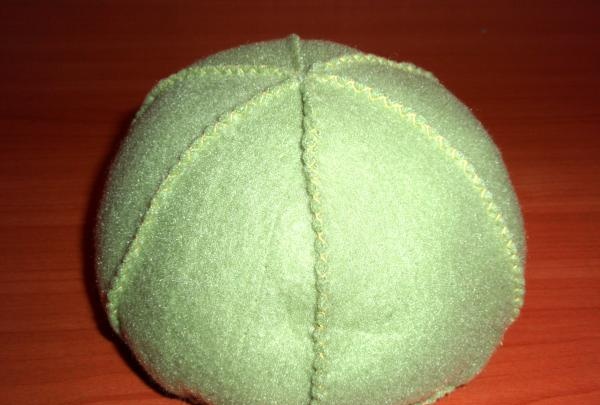
10. Take the prepared button on the stem and place it on the fabric.
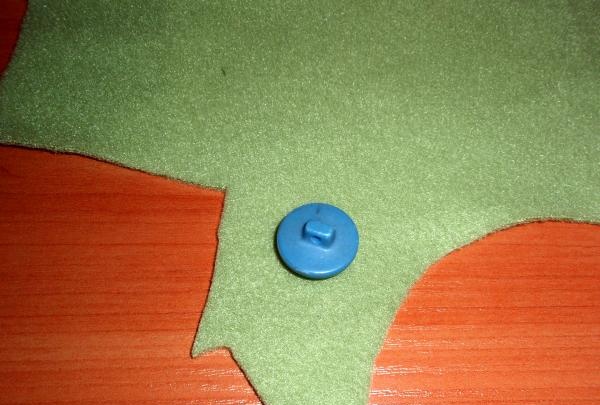
Using a pencil, trace the button, making allowances approximately equal to its radius.
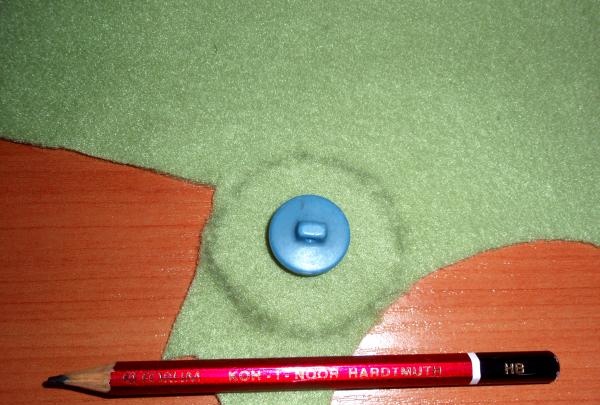
11. Cut out the blank along the drawn contour. In this case, we got a small circle.
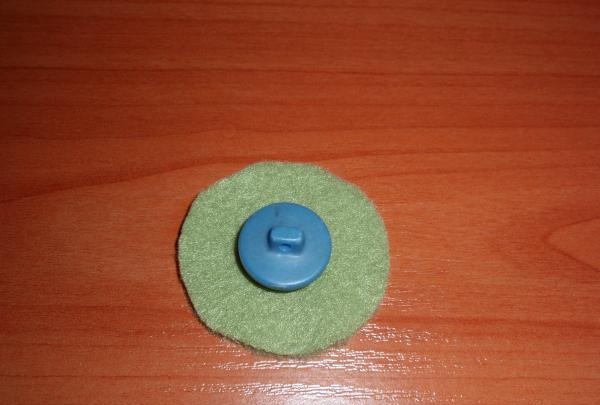
12. Stepping back from the edge of the circle 3-4 mm, stretch the thread.
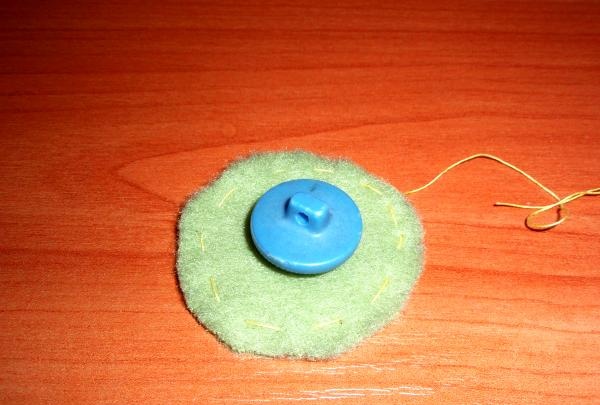
13. Tighten the thread, cover the button with fabric and secure the thread. The foot of the button should stick out from the fabric for ease of further sewing.
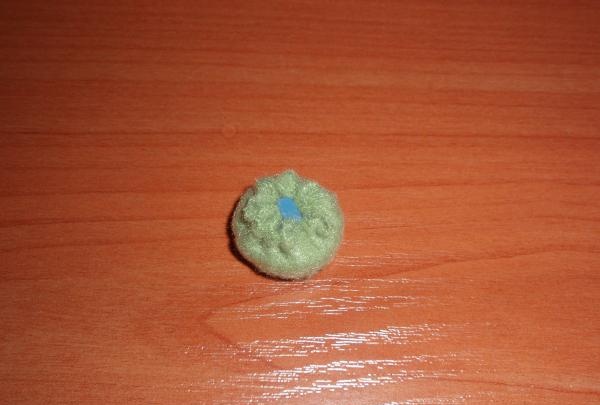
14. Place the fabric-covered button in the center of the top of the cactus.
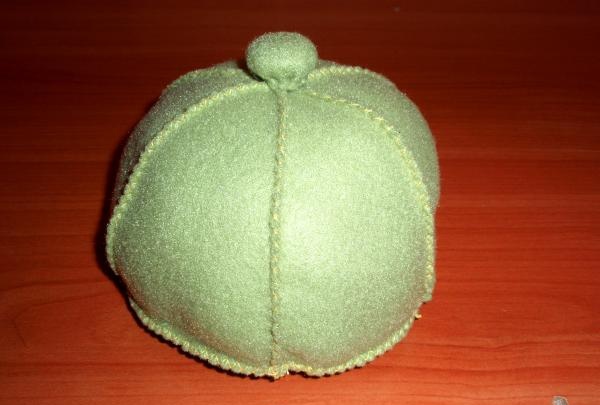
Sew a button in the middle of the cactus, simultaneously connecting the top and bottom. Thus, pulling her down.
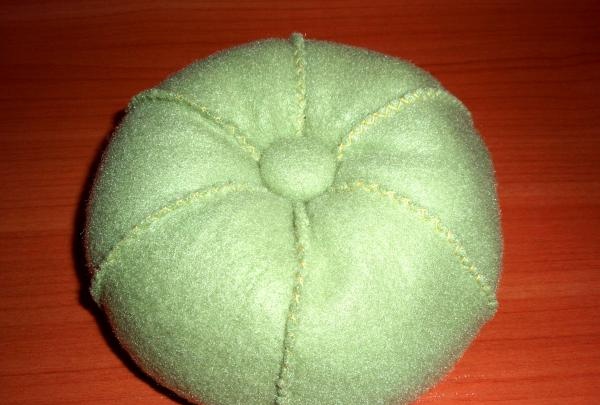
The pincushion is ready.

To ensure safety, we place it in a closed container.
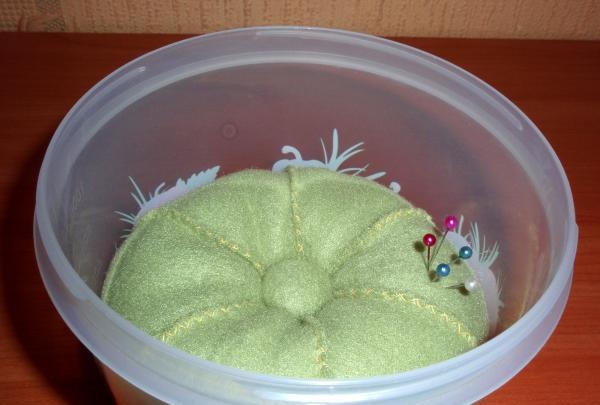
And close the lid.
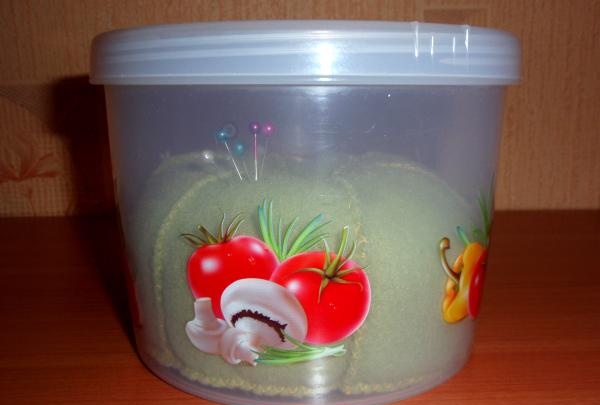
Now your household members don’t have to worry about getting pricked with needles.
